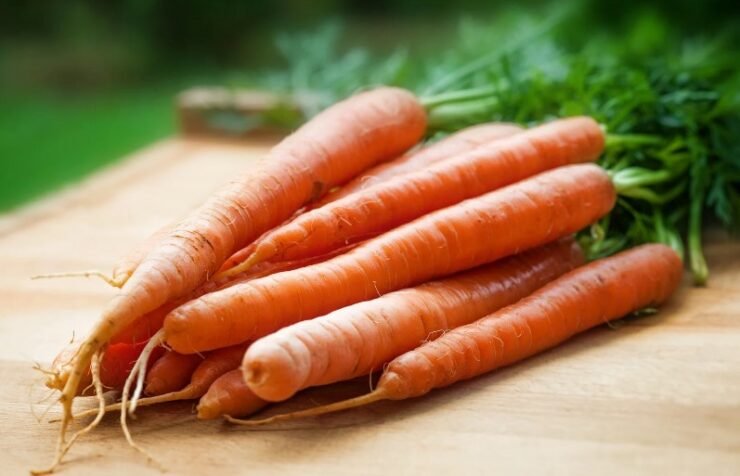Carrots are one of the most popular vegetables eaten worldwide for a reason. Their bitter-sweet, earthy flavor and versatile nature make them a staple in countless recipes and almost any kitchen.
But what if you run out of carrots or need a low-carb swap? Fortunately, several carrot substitutes are surprisingly simple and make for convincing alternatives.
If culinary school taught me anything, it’s how to find a perfect substitute for a missing ingredient and keep cooking. I use carrot alternatives all the time in my kitchen as a way to use up leftover produce.
Together, I’ll go over 8 alternatives for carrots, plus when and how to use each one.
In This Article
8 Easy Swaps For Carrots & When To Use Them
Parsnips
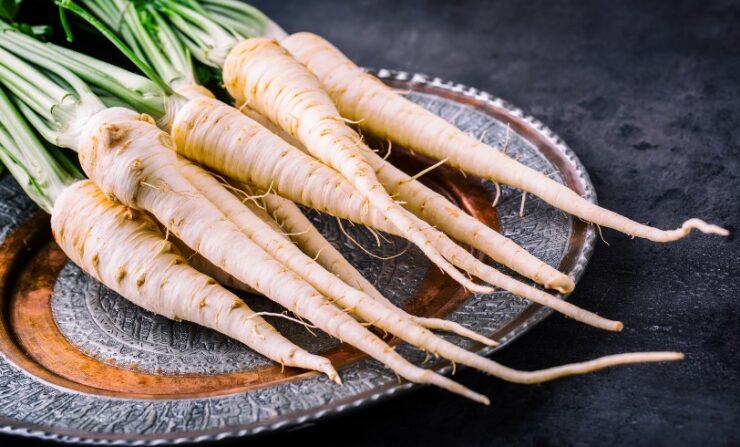
Parsnips are an extremely convincing alternative to carrots because of their similar texture and appearance. They have a milder flavor than carrots which leans nutty with a bit of spice, but they still carry a similar sweetness to their orange counterpart.
You can substitute parsnips equally for carrots in soups and stews or simple sheet-pan roasting. Parsnips’ subtle and nutty flavor is particularly delicious when added to warming winter curries or soups
Parsnips don’t have the same satisfying crunch and flavor as carrots when raw, and most of the sweetness comes out after they’re cooked. So, skip the parsnips and opt for a different alternative for any cold salads or raw snacking.
Remember that parsnips are softer than carrots and cook a bit faster. So, when simmering a dish, add the parsnips later in the cooking process.

Pro-Tip: Don’t peel a parsnip the way you would a carrot! Most of the flavor of parsnips is in the outer layers, so just make sure to give them a good scrub before using.
Squash
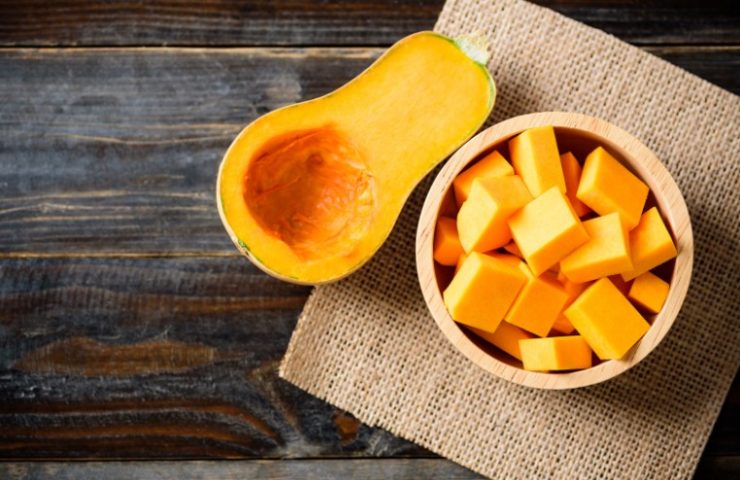
Both winter and summer squash can replace carrots in different ways. Winter squash like butternut, honey nut, or acorn varieties are delicious when roasted or added to hearty soups or curries.
On the other hand, summer squash is perfect in stir-fries or lighter broth-based soups and stews.
Squash doesn’t have a strong flavor profile; rather, it takes on the flavors of the dish it’s incorporated into. You can even use yellow summer squash instead of shredded carrots in baking recipes, and you’d barely notice a difference.
Zucchini
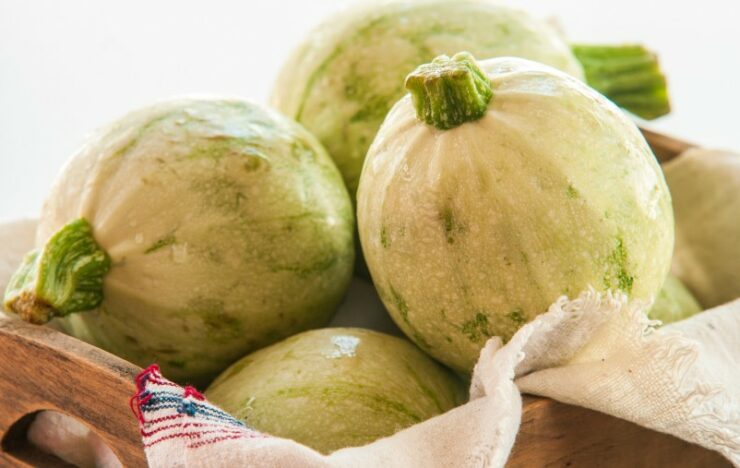
True, zucchini is a type of summer squash. Still, it deserves its own section since it is the perfect baking alternative to shredded carrots.
Zucchini can seamlessly swap for carrots in all baking recipes but is specifically well suited to carrot cake. It will keep your cake or loaf moist, and you can rest assured it won’t add any vegetal flavor to the finished product.
You may want to shred your zucchini a tad thicker than you would carrots since the zucchini will soften further once cut.
The more substantial strips will achieve that bit of toothsome bite you’re looking for in your baked good. Also, you may want to remove the zucchini’s outer peel so that there isn’t any off-putting green color peeking out in your finished dish.
Substitute shredded carrots with shredded zucchini cup for cup in any of your baked goods.
Beets
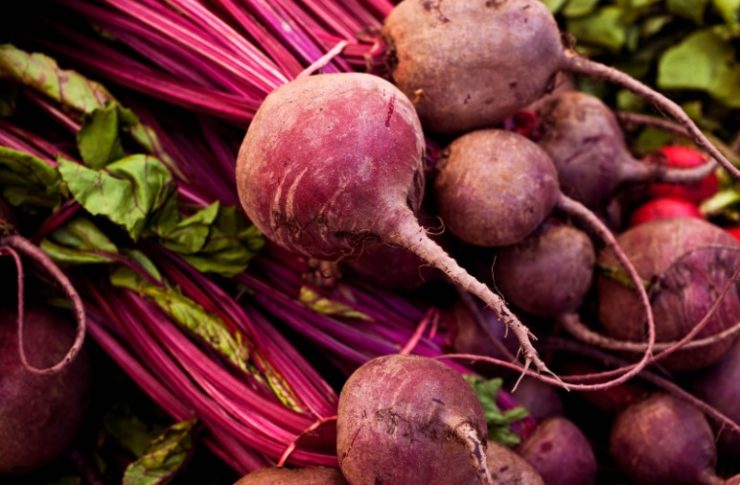
Swap carrots for beets if you want to maintain an earthy flavor in your dish. I like to substitute roasted carrots for roasted beets because the caramelization during the roasting process mellows the beet’s taste and leaves a pleasant earthy flavor.
However, when using red beats be aware that their dark color can completely change the color of the dish.
Golden beets are milder than their red or purple counterparts and make an excellent substitution for carrots without drastically impacting the look of a dish.
Celery
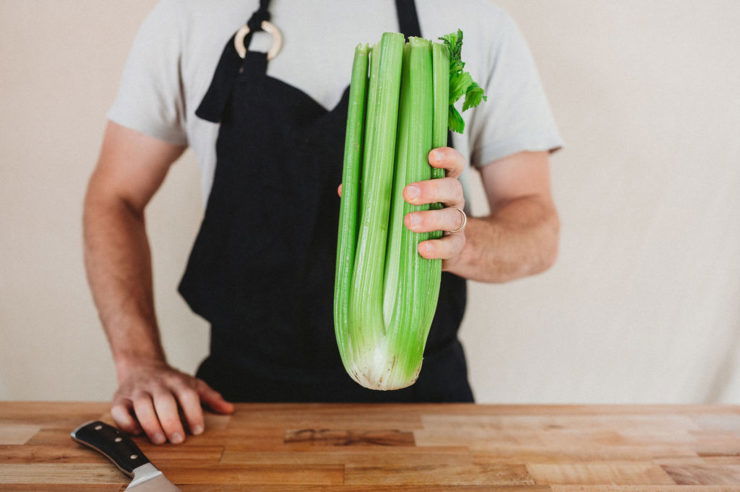
Celery is almost as common as carrots and is often used right alongside carrots in recipes.
In culinary school, our aromatic flavor base for many classic French recipes began with lightly sauteéd carrots, onions, and celery (a.k.a. Mirepoix). I’m sure you can think of more than a handful of dishes that incorporate this same trifecta of vegetables right off the top of your head.
Celery is perfect for snacking on raw, and you can easily incorporate it into tossed salads or mayo-based deli-style salads, a la potato, chicken, or macaroni.
You can also simmer it into soups, stews, or curries. Or, add celery to your favorite stir-fry.
If you’re out of carrots, don’t shy away from adding celery to your recipe if it isn’t already present. Swap them at a 1:1 ratio.

Pro-Tip: If your dish already calls for celery, don’t double up on the ingredient, or the flavor can become overpowering. Instead, add one of the other alternatives from this list.
Jicama
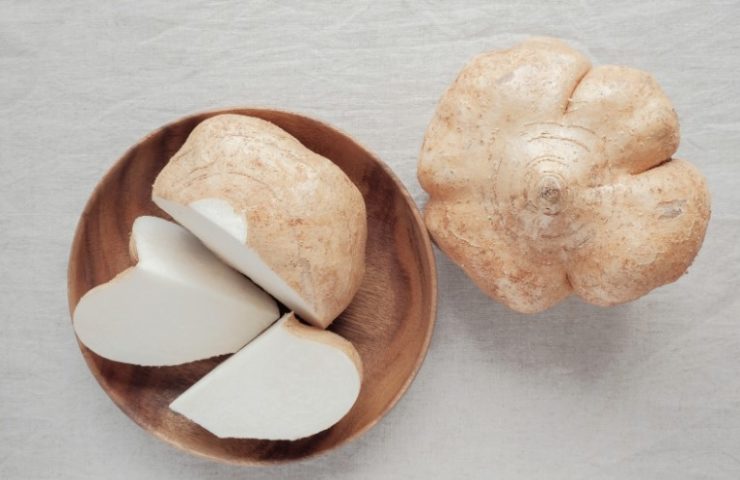
If you’re looking for a low-carb option to eat in place of carrots, you need to try jicama. Jicama is a root vegetable with a brown exterior (which you’ll peel off before using) and tender white flesh with a texture similar to an apple.
I prefer using jicama in place of carrots for raw-eating and snacking. It gives you the same satisfying crunch as a carrot but much juicier, making it the perfect alternative for snack plates or paired with cold dips.
You can fry or roast jicama also. Just make sure to season it well since it won’t offer much flavor on its own.
Daikon
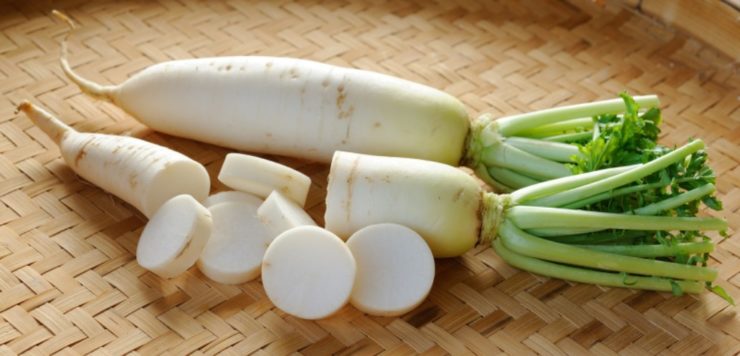
If you’ve never tried daikon before, put this one at the top of your list. There is a flavor difference between the two vegetables, but it’s a difference that adds surprising nuance to any recipe.
Daikon is a type of radish with a similar texture to a carrot. It holds up like a carrot when cooked, so you won’t need to adjust any cooking times here. However, it has a peppery flavor, unlike the sweet taste of a carrot.
As long as you expect this difference in flavor in your dish, you’ll love the added complexity that daikon brings to everyday stocks, soups, stews, and the like.
Swap out carrots for an equal amount of daikon in all your cooking recipes.
Water Chestnuts
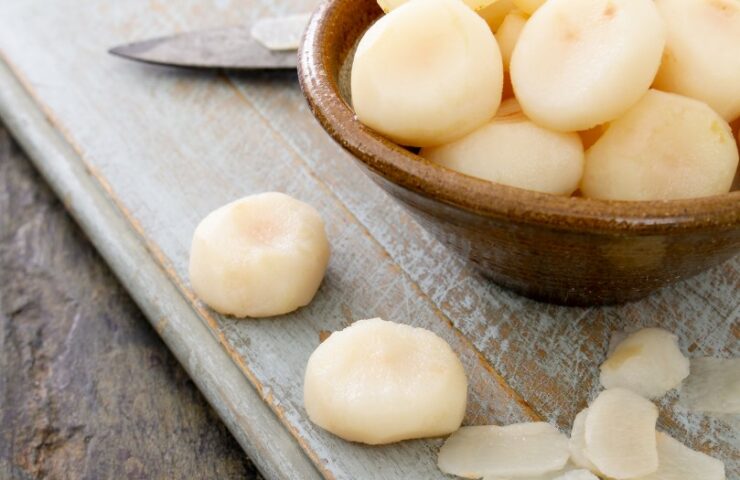
Water chestnuts might not be the first thing that comes to mind when you think of carrot alternatives, but trust me, these are my usual go-to.
Throwing together a tossed green salad and need an element of crunch? Steaming some vegetables and want a mild yet sweet option? Look no further than water chestnuts for an excellent carrot alternative.
They can even be sliced up and cooked into stir-frys, but take care not to overcook them, or they’ll lose their crunch.
Water chestnuts are sweet and nutty, with just a hint of tartness, and can swap for carrots at a 1:1 ratio. I always keep a can of these in my pantry because it’s so simple to incorporate into all kinds of meals.
Frequently Asked Questions
What is a low-carb substitute for carrots?
Celery and jicama are both excellent low-carb alternatives to carrots. Both options offer neutral flavors but add body and can bring a bit of crunch to recipes depending on cooking methods.
What can I use instead of carrots in carrot cake?
Zucchini is a great option to use in place of carrots (or mixed with a lesser amount of carrots) in a carrot cake recipe. It’s a simple substitution that can be swapped in equal amounts and prepared the same way you would carrots.
What can I use in place of carrots?
Parsnips, squash, beets, and celery are the most common carrot substitutions for roasting or raw-eating. On the other hand, zucchini is an excellent alternative when a baking recipe calls for shredded carrots.
